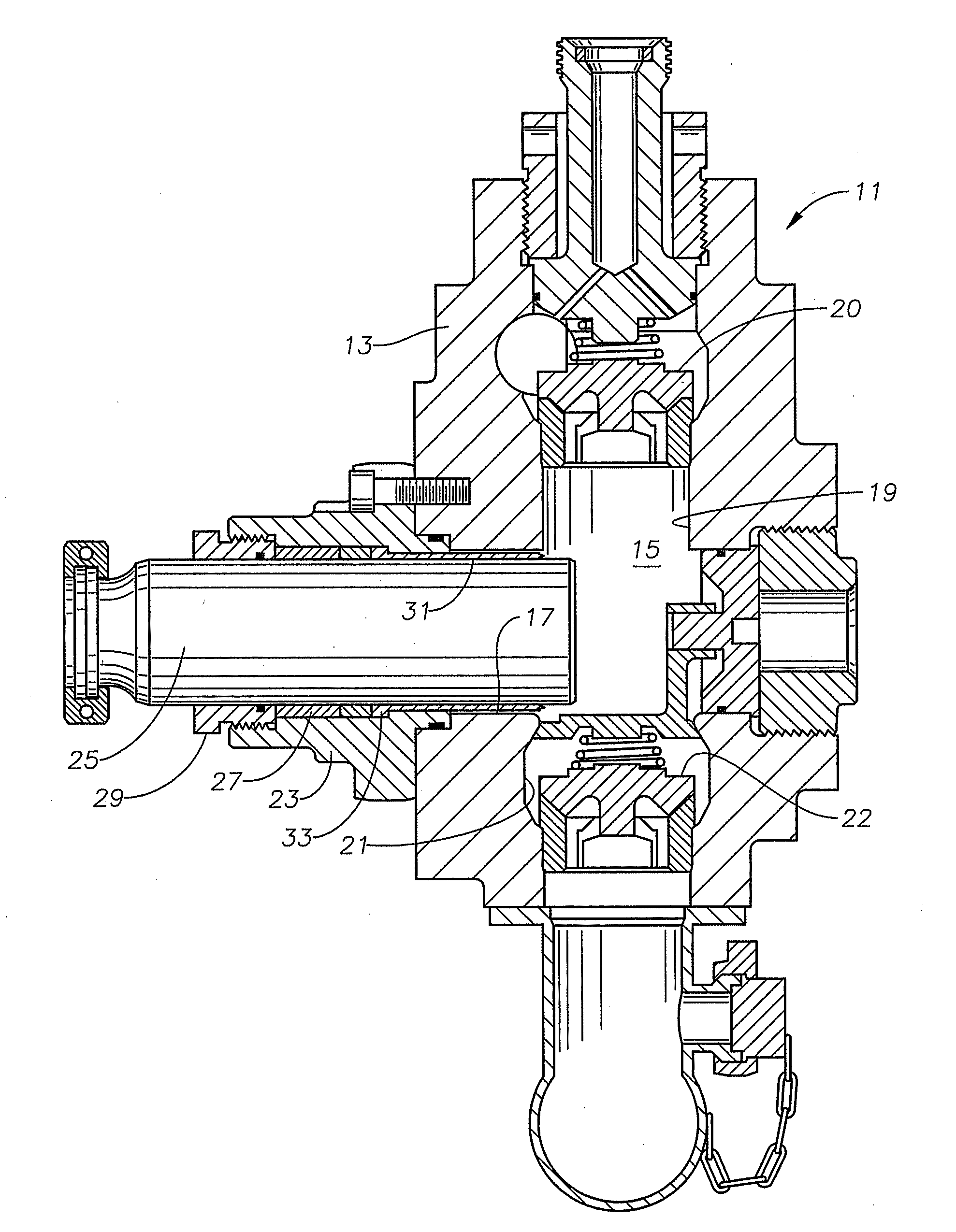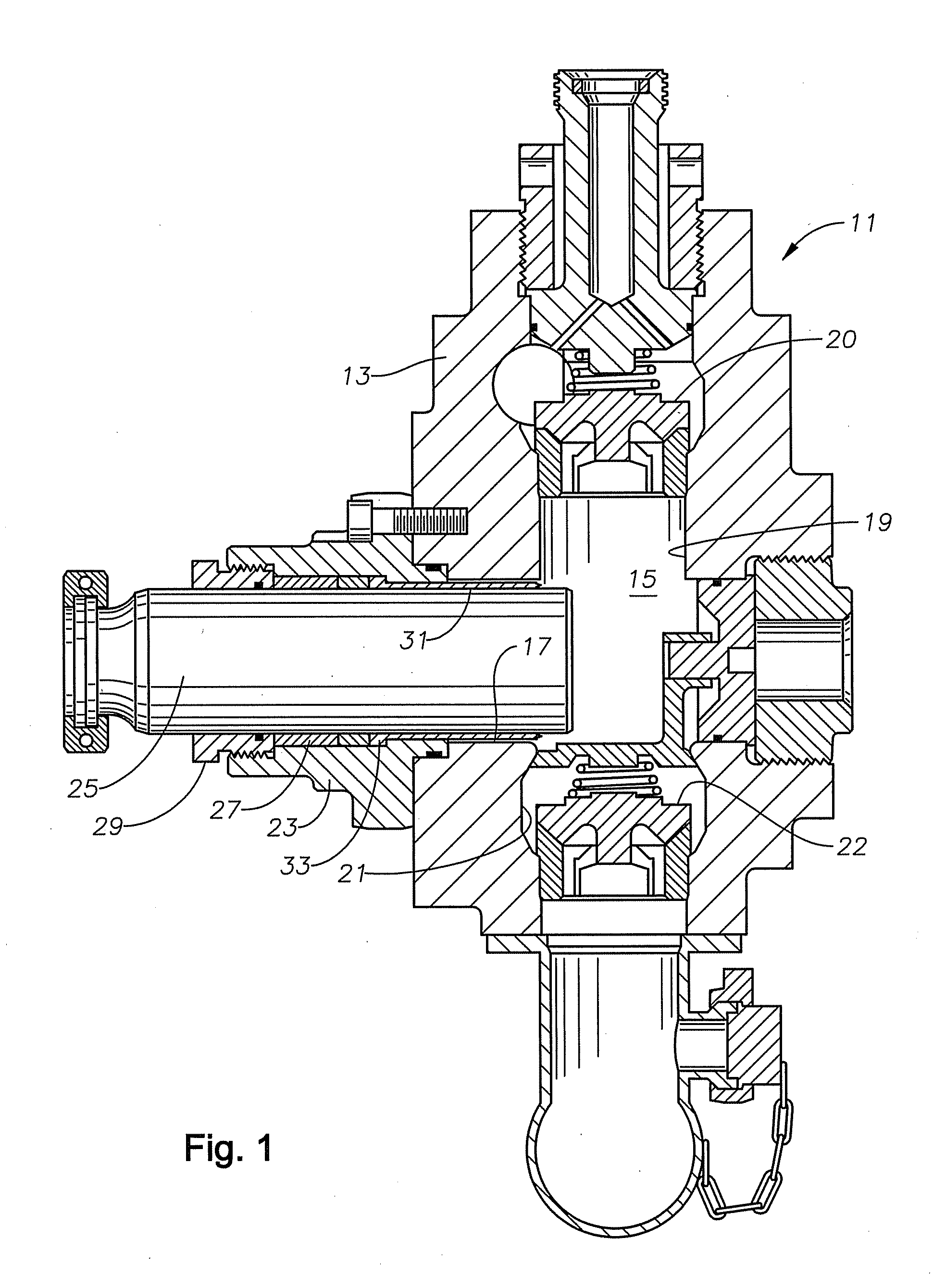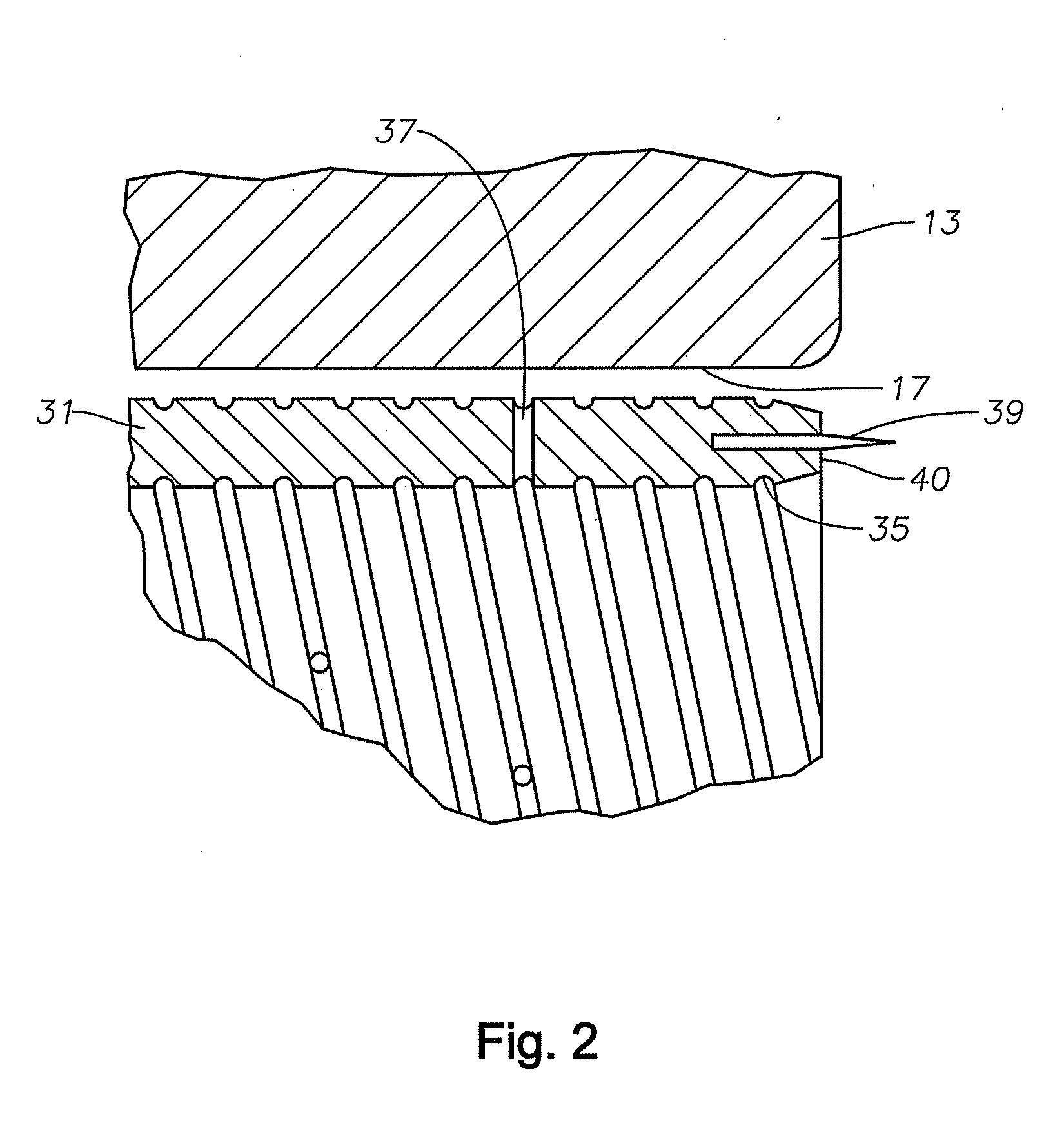Pump Cavitation Device
a cavitation device and pump technology, applied in the field of pumps, can solve the problems of early failure of components, leakage in sealing areas, loss of pressure integrity, etc., and achieve the effect of reducing the cavitation extending the working life of the component, and reducing the damage of a component having a sacrificial member
- Summary
- Abstract
- Description
- Claims
- Application Information
AI Technical Summary
Benefits of technology
Problems solved by technology
Method used
Image
Examples
Embodiment Construction
[0060]Referring to FIG. 1, a fluid end 11 illustrates one portion of a reciprocating pump of a type that is typically used in the well frac industry. The fluid end 11 is part of a surface mounted pump, typically mounted on a truck. The fluid end 11 is not submersed in the fluid to be pumped; rather a flowline leads to the fluid 11 to convey it to be pumped. The fluid end 11 includes a fluid end block 13 having a chamber 15. A plunger bore 17 intersects the chamber 15 on one side. A discharge valve port or passage 19 leads from the chamber 15; a suction on inlet port or passage 21 leads from the chamber 15 in a generally opposite direction. In this embodiment, the discharge and suction passages 19 and 21 are coaxial and perpendicular to the plunger bore 17, but they could be at different angles relative to each other and to the plunger bore 17.
[0061]A schematically shown discharge valve 20 is located in the discharge passage 19. The discharge valve 20 is spring-biased to a closed pos...
PUM
 Login to View More
Login to View More Abstract
Description
Claims
Application Information
 Login to View More
Login to View More - R&D
- Intellectual Property
- Life Sciences
- Materials
- Tech Scout
- Unparalleled Data Quality
- Higher Quality Content
- 60% Fewer Hallucinations
Browse by: Latest US Patents, China's latest patents, Technical Efficacy Thesaurus, Application Domain, Technology Topic, Popular Technical Reports.
© 2025 PatSnap. All rights reserved.Legal|Privacy policy|Modern Slavery Act Transparency Statement|Sitemap|About US| Contact US: help@patsnap.com



